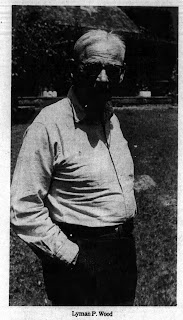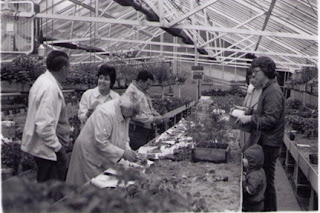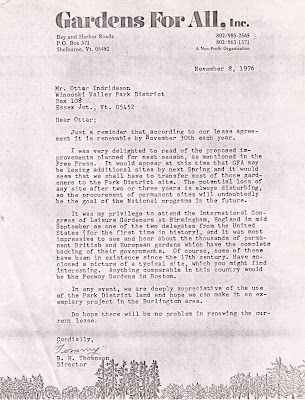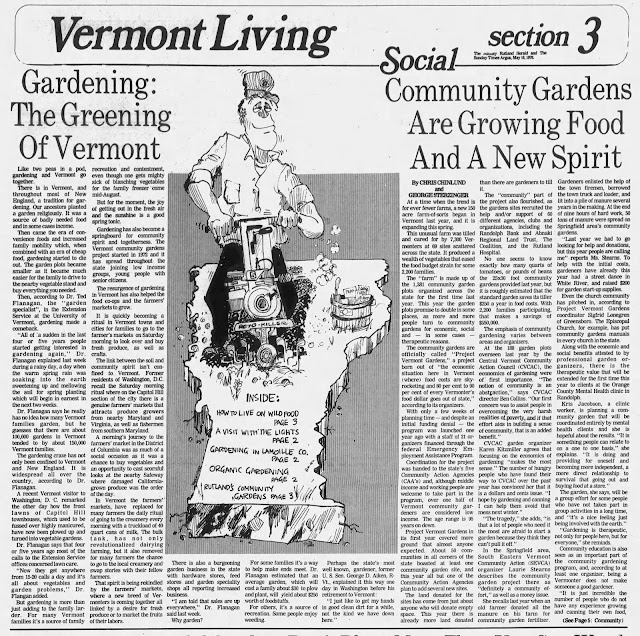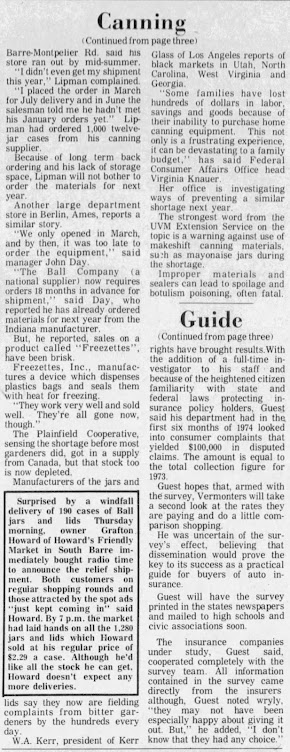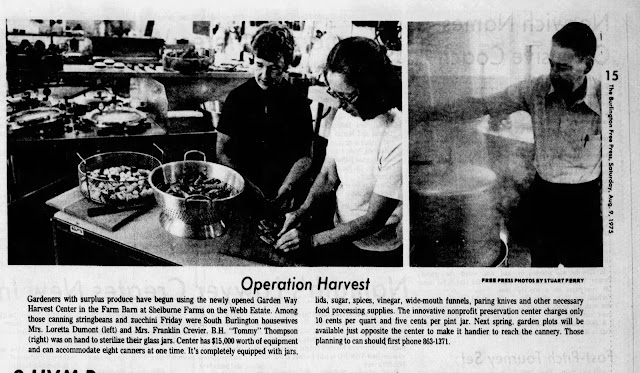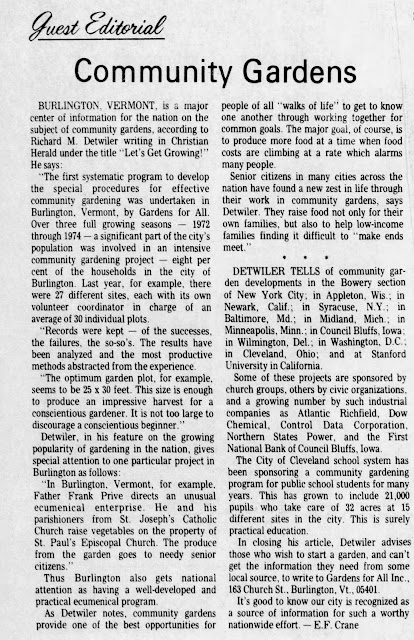BACG History Post #26
As Gardens for All consolidated sites in the Burlington area, the community garden movement across Vermont experienced similar trend.
In her weekly column dated April 2, 1978, garden writer Carol Howe aptly described the history and landscape of community gardening in southeastern Vermont.
"Sponsored by Southeastern Vermont Community Action (SEVCA), community gardening spread and grew. Coordinator Laurie Stearns of North Springfield found land to use, arranged for water and tilling and was able to offer vegetable seeds at reduced rates.
Families signed up eagerly. Gardening became a sociable thing, with growers swapping surplus or figuring ways to rout the woodchuck in the zucchini patch.
For some, gardening was a new-found talent as bushels of potatoes and barrows of squash grew because of careful tending. Others found they hadn't the patience to keep at it; their plots were sad squares in the odd patchwork garden picture. Those who had grown up on farms recalled old skills and learned new ones."
Howe reported that SEVCA would not be sponsoring community gardens in 1978. In Springfield, oversight for the community garden was transferred to volunteers under the auspices of the Parks, Recreation, and Leisure Department.
Please click the article images to enlarge for viewing.
An article in the April 20, 1978 Rutland Herald described Rutland as a "garden city," a term for an urban area which seeks to enjoy the advantages of both city and country life.
Vermont's second largest city was home to four community gardens that year. The largest site, with 79 plots, was located off Woodstock Avenue across from Rutland High School. Organic garden plots were located in separate areas of Rutland's community gardens. Senior citizens and youths were actively recruited in a preemptive effort to curb vandalism of garden plots.
Author's Notes: Carol Howe (1923-2017) was a lifelong gardener and writer. She began producing a newspaper garden column in 1974 and had a nearly unbroken 42-year streak of weekly columns. Howe lived in Springfield, Vermont during the 1970s. Her Vermont Gardening column appeared in the Rutland Herald and other newspapers.
The community garden site off Woodstock Avenue in Rutland was reinvigorated during the mid 2000s. The site is the largest of two community gardens currently overseen by the Rutland Recreation and Parks Department.





